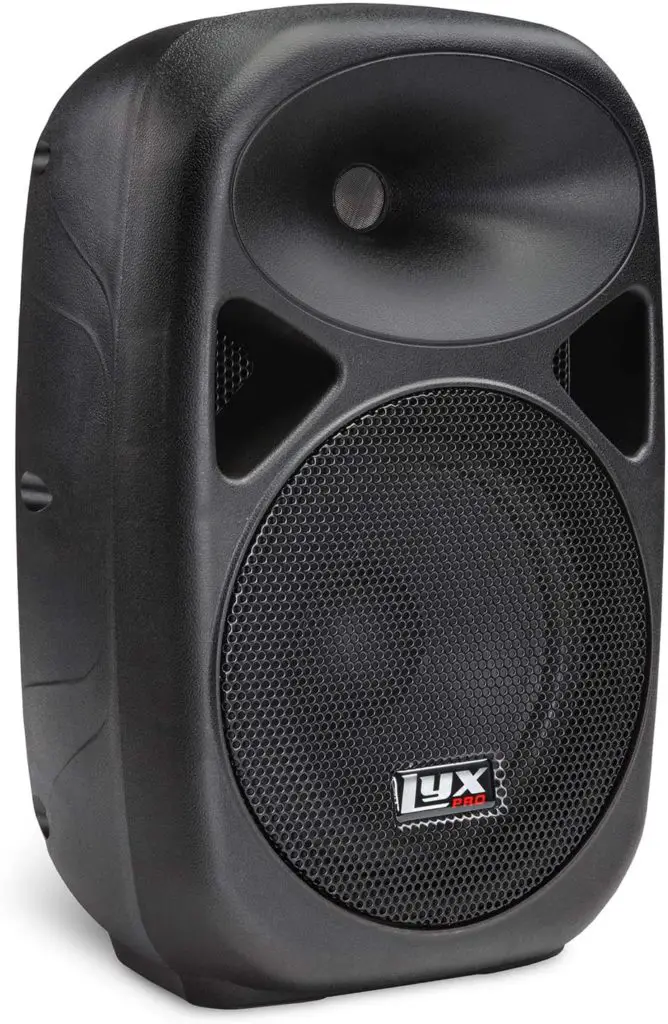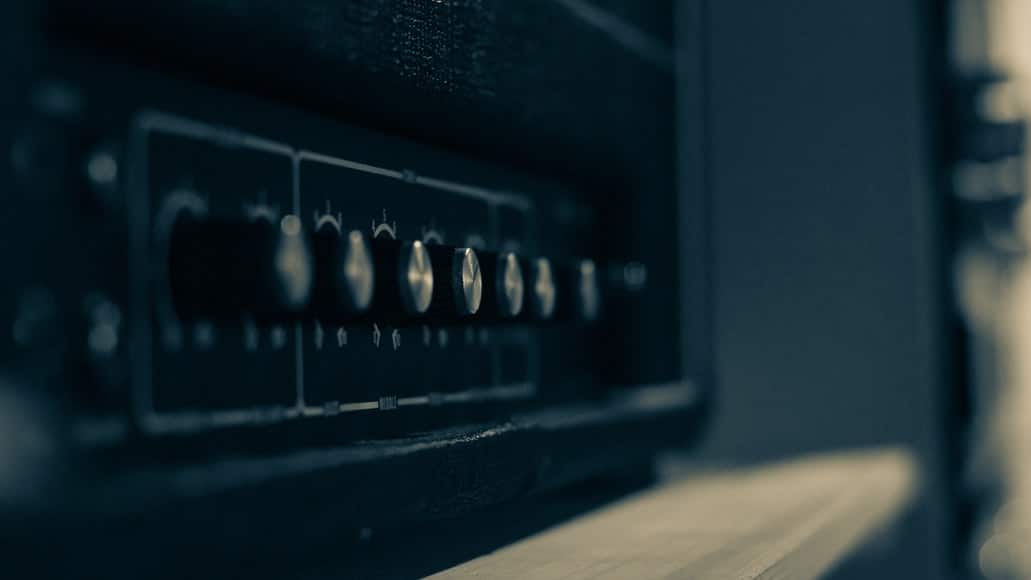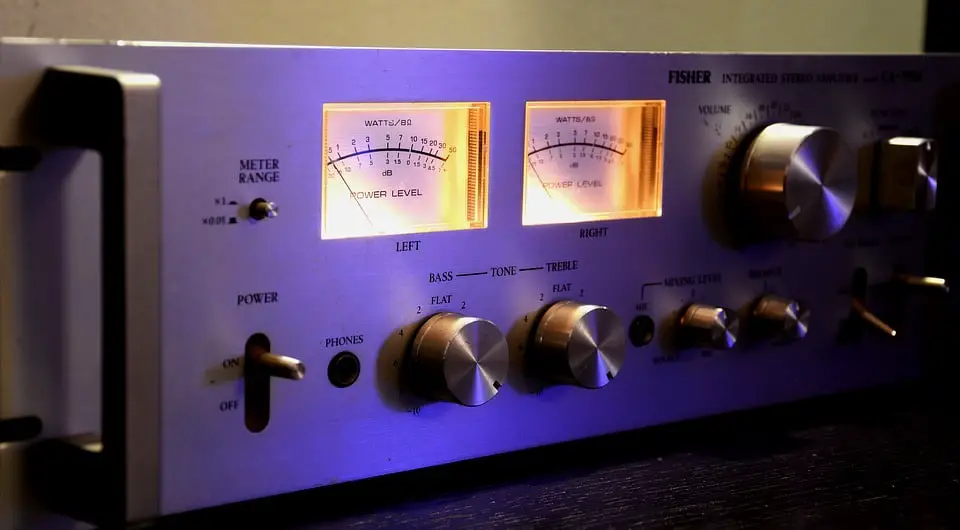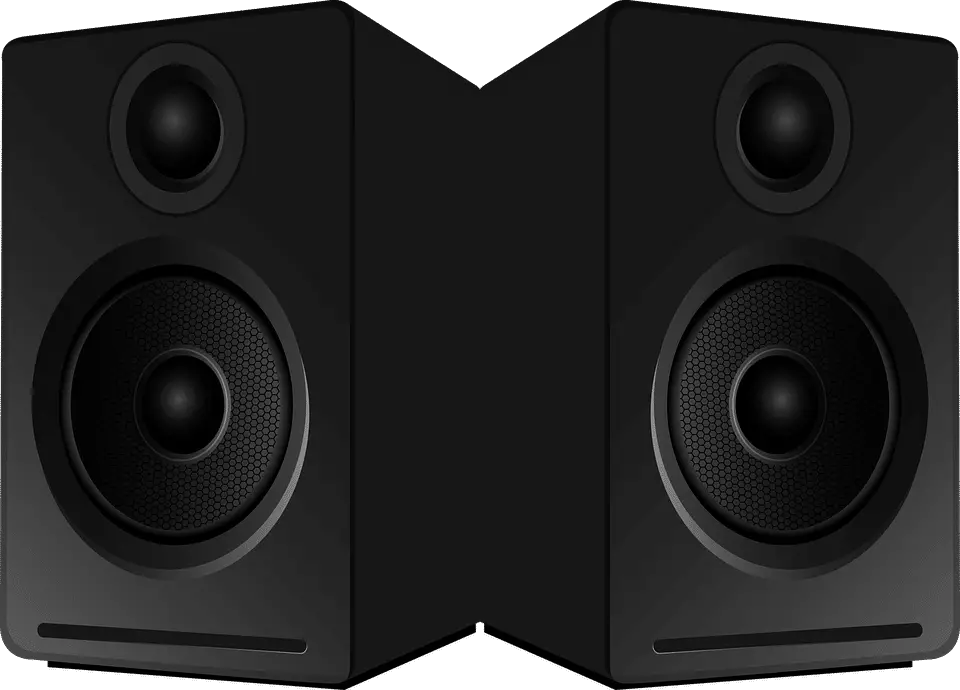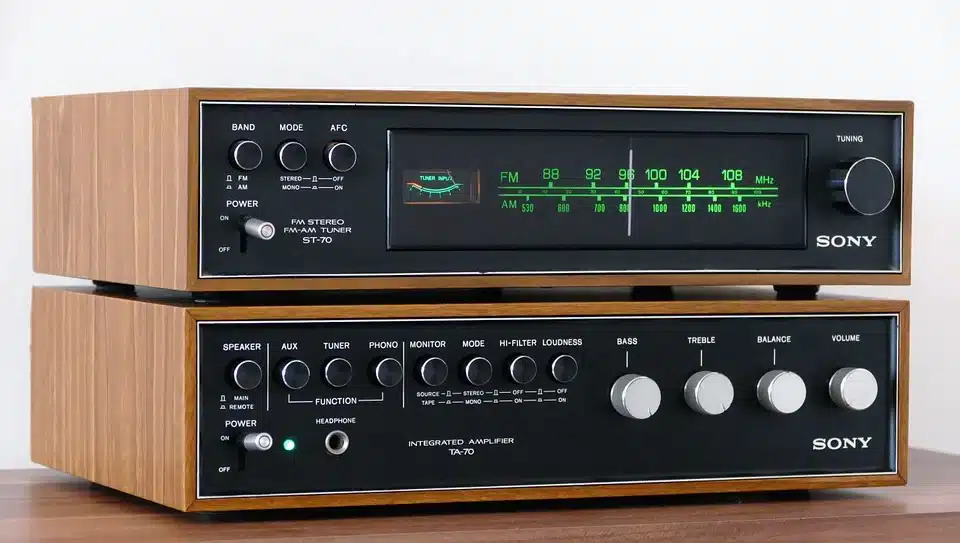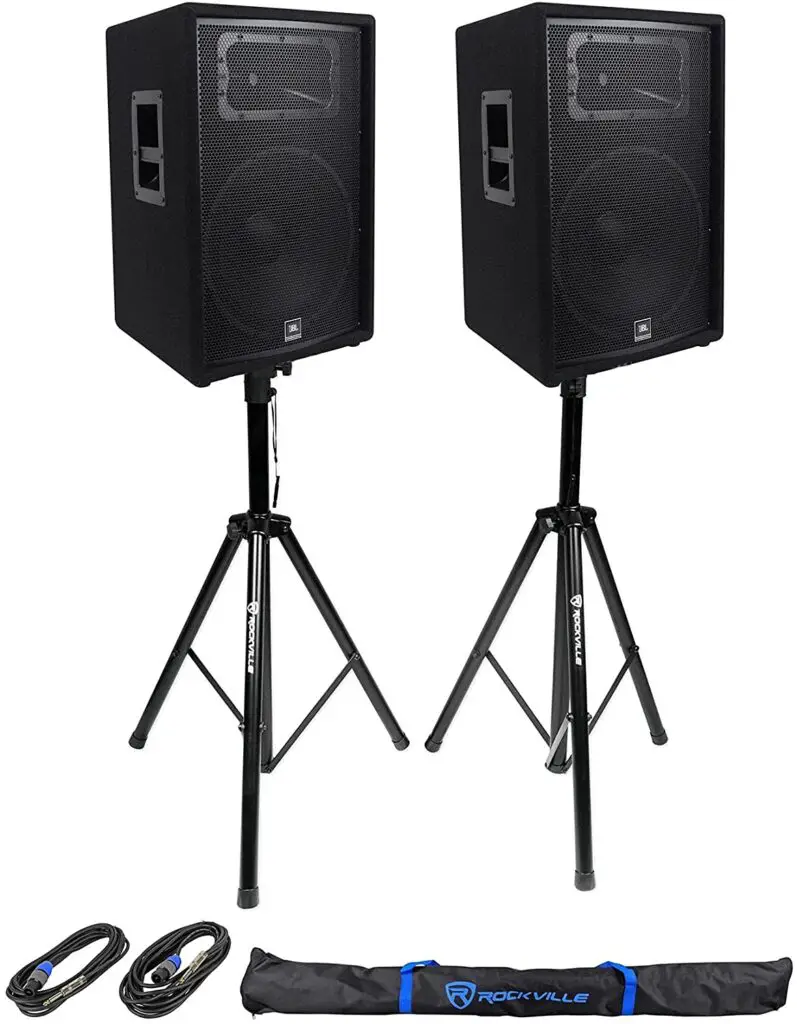For any audio setup, you will need speakers to produce sound. They are categorized into two main types – active speakers & passive speakers.
We will be learning how to power passive speakers without an amp with clear step by steps and Factors to Check before Powering Passive Speakers without an Amp
Active speakers are powered by an external source while passive ones require an external amplifier. Active speakers come with a built-in amplifier, therefore they need no connection to an external amplifier.
You can simply connect them to an electric power source and an audio source.
One downside to passive speakers is the fact that they require external power. They need a keeper to stay alive, be it a receiver, mixer, or amplifier.
Although only a single wire is required for this purpose, making your speaker too close to other components can be dangerous and could even ruin these devices. Passive speakers are simple & easy to set up.
Without an amplifier, they might not sound their best but there are still other solutions for this.
Your budget may not be able to cover it or your amplifier could be beyond repair.
You can still power passive speakers without an amplifier by following the instructions in this article.
Passive speakers are speakers built with drivers on the back of a cabinet. They use the energy from the amplifier to excite the speaker and make it produce sound.
They can be found in cheaper speakers or for more flexibility in positioning and small size, and some hi-fi systems.
Passive speakers need to be hooked up to an amplifier with a cable, but these days many amps come with built-in speaker connections that can be used without any extra equipment.
Table of Contents
Would Passive Speakers Need an Amp?
In the world of sound, a passive speaker does not have an onboard amplifier. Passive speakers require an external amplifier to produce sound.
A passive speaker is a speaker that does not have its built-in power source or electronic circuitry to provide power and amplification for the signal coming from the preamplifier/receiver (or another audio source).
The term “passive” refers to the fact that it does not actively amplify its sound; it requires separate amplification, usually provided by an integrated power amplifier or AV receiver/amplifier.
A passive speaker is simply a “dumb” loudspeaker with no electronics built-in; it relies on an external stereo amplifier for power and signal processing.
Factors to Check before Powering Passive Speakers without an Amp
Passive speakers require an external power supply, which you can provide through an amplifier if you have one.
If not, there are other ways to connect your passive speakers to other devices that can produce sound! Before connecting your speakers to other sound sources, be sure to consider the following:
1. Size and Power rating of the speakers
Most times, speakers with higher wattage produce louder sounds than those with lower wattage. Consequently, it takes more power to gear up for their full potential.
If you want to power speakers without an amp, make sure the sound source is powerful enough for it.
If you’re buying new passive speakers to be connected to a sound source without an amp, make sure they can support the power rating of the speaker.
2. Check the Impedance rating of the speaker
Make sure your speaker impedance rating is high enough. The lower the impedance, the more power is needed to get quality sound – which is typically an issue with computers.
The higher the impedance rating, the less current drawn. If the impedance rating is lower, it means that it draws a higher current from the sound source.
When connecting your speakers to a PC, make sure they have a high impedance rating, such as 8 or 16 ohms.
If you connect speakers with a low impedance, such as 4 ohms, to your computer, the speaker may damage your computer’s headphone connector.
3. Type of source component
Consider connecting those passive speakers to a suitable powered source component if you don’t have any external amplifier.
This would mean that the source component, such as a powered subwoofer, a powered mixer, or even an AV receiver that has a built-in amp, should have one.
If the source component is not powered, however, passive speakers will struggle to connect since they will be weak.
Ways On How To Power Passive Speakers Without An Amp
Passive speakers are speakers that require an amplifier to produce sound. In this section, we’ll explore how to power a passive speaker without an amp.
In passive speakers, there is a magnet and coil of wire inside the speaker box. This coil of wire is connected to a receiver or a receiver board which provides the power for the speaker.
A receiver board can be connected to several amplifiers or other sources of AC voltage.
When the receiver board is connected to AC voltage, it will provide power to both active and passive speakers connected to it.
All you have to do now is plug the passive speaker into the computer’s headphone jack.
The first step is to determine the length of the speaker wire that will connect to the power supply, based on where you want your speaker to go.
Consider adding an extra wire in case you wish to relocate the speakers. Remove 0.5 inches of the plastic coating from both ends of the wire to reveal the wire.
To achieve this, you’ll need wire strippers. Scissors can also be used. Make a Connection of your speaker cable to the available speaker terminals.
The majority of terminals are circular or tab connectors. Tabs are just holes for a wire that are either black or red. Insert the wire after pressing the plastic open.
Colored connectors on circular ones, on the other hand, are twisted anticlockwise to disclose the terminal underneath.
Connect the opposite end of the wire to the power source’s terminal.
On the power supply and speaker, the black (negative) and red (positive) terminals are connected to the same side of the speaker wire.
Speaker wire is usually labeled to aid in the identification of either side.
Although passive speakers are designed to be used with an amplifier, they can also be powered without one.
It’s not necessary to connect a passive speaker to the amplifier for it to work.
The Best Passive Speakers To Buy Now
- NEUMI BS5 Passive Bookshelf Speakers
- JBL Professional 1 Series 104-BT Compact
- LyxPro 15″ Inch Passive DJ PA Speaker System
- Audioengine HDP6 Passive Speakers
- JBL Pro JRX215 Passive Speaker
Conclusion
Passive speakers are generally hooked up to an amplifier. If your amp is not powerful enough, you might want to consider other options.
If your amplifier can be powered by a standard power cord, you can hook up the amp directly to the passive speakers.
To get the best sound quality, make sure your speaker has a built-in amplifier. Otherwise, you won’t be able to achieve the highest possible audio output.

